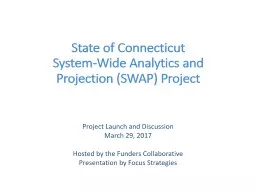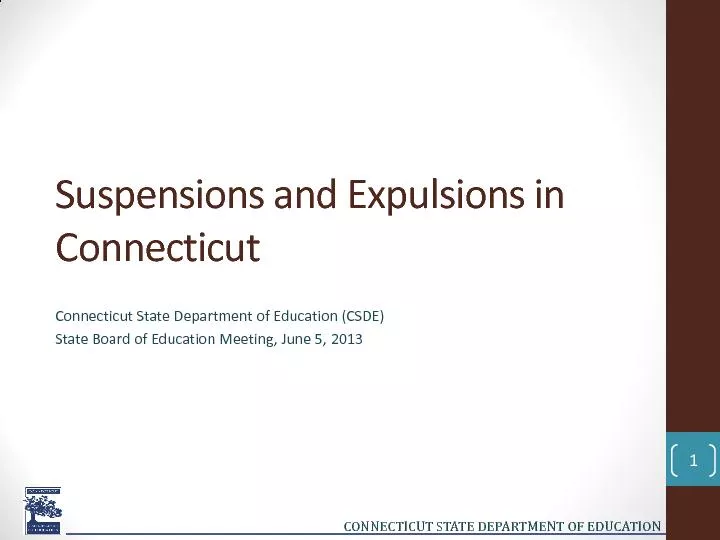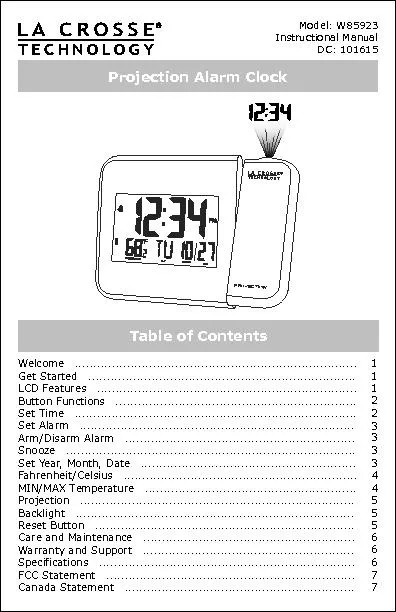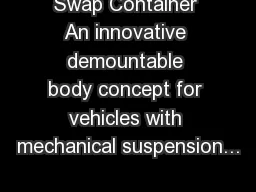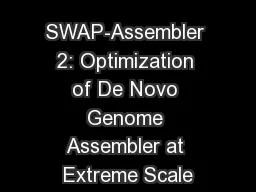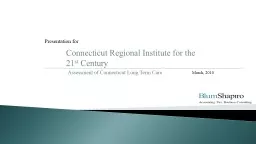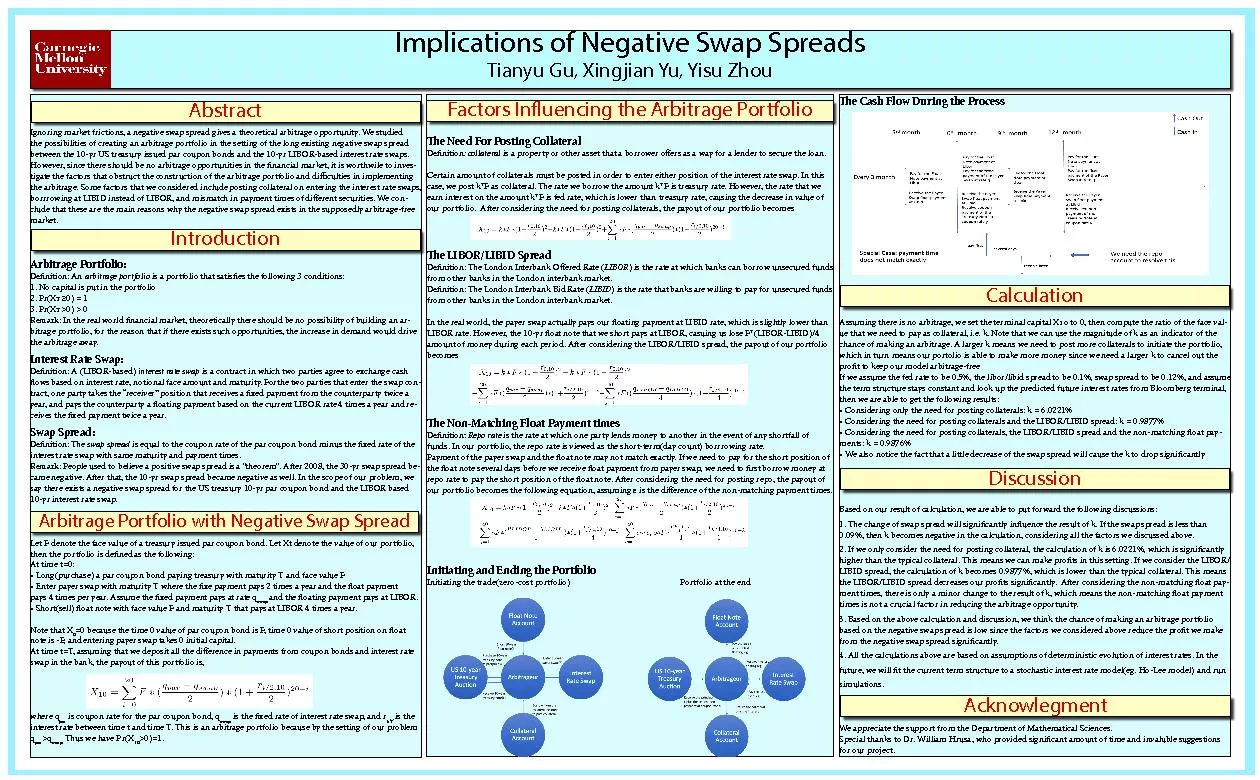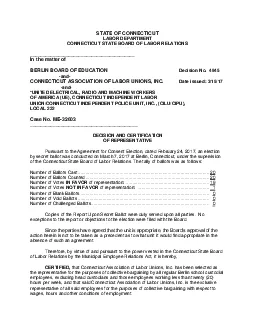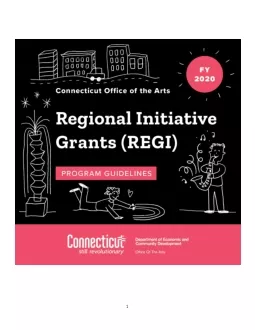PPT-State of Connecticut System-Wide Analytics and Projection (SWAP) Project
Author : tatiana-dople | Published Date : 2018-03-11
Project Launch and Discussion March 29 2017 Hosted by the Funders Collaborative Presentation by Focus Strategies Agenda Overview Welcome amp Introduction Setting
Presentation Embed Code
Download Presentation
Download Presentation The PPT/PDF document "State of Connecticut System-Wide Analyti..." is the property of its rightful owner. Permission is granted to download and print the materials on this website for personal, non-commercial use only, and to display it on your personal computer provided you do not modify the materials and that you retain all copyright notices contained in the materials. By downloading content from our website, you accept the terms of this agreement.
State of Connecticut System-Wide Analytics and Projection (SWAP) Project: Transcript
Download Rules Of Document
"State of Connecticut System-Wide Analytics and Projection (SWAP) Project"The content belongs to its owner. You may download and print it for personal use, without modification, and keep all copyright notices. By downloading, you agree to these terms.
Related Documents

